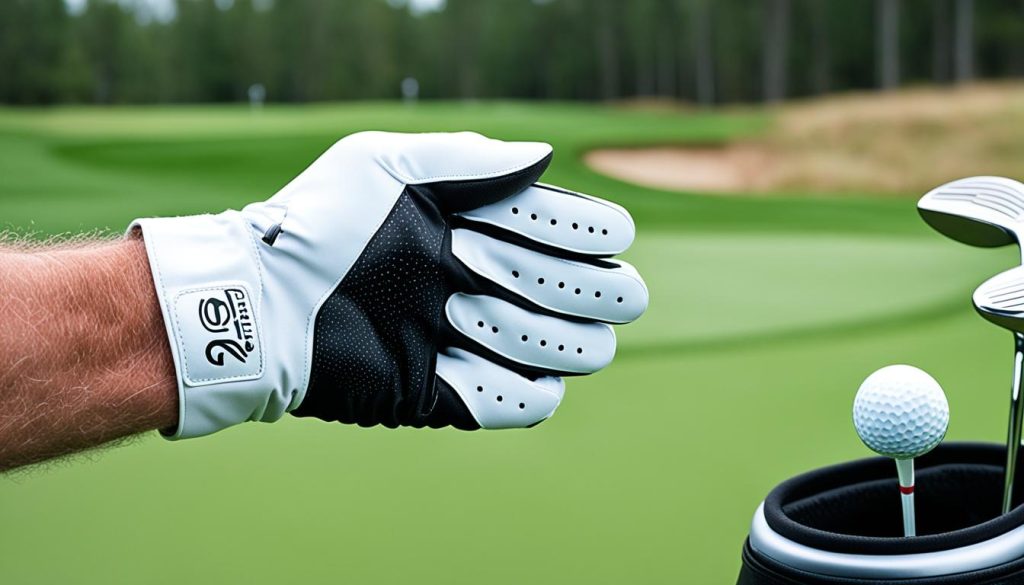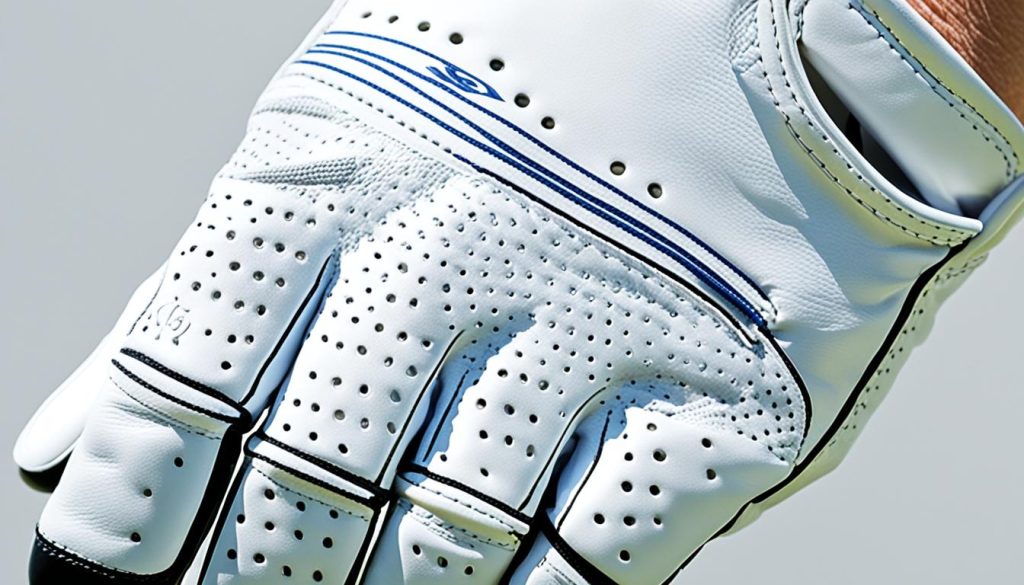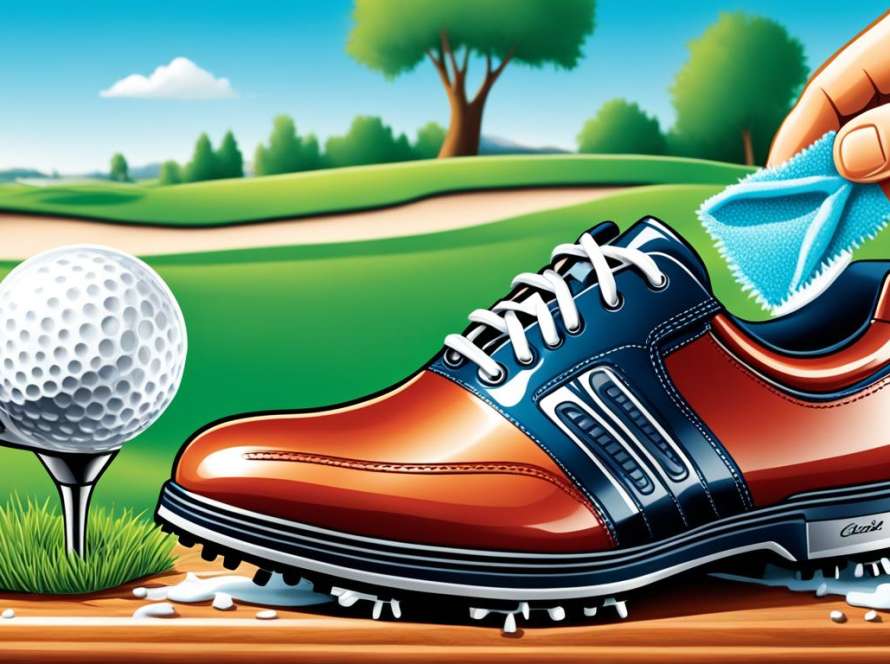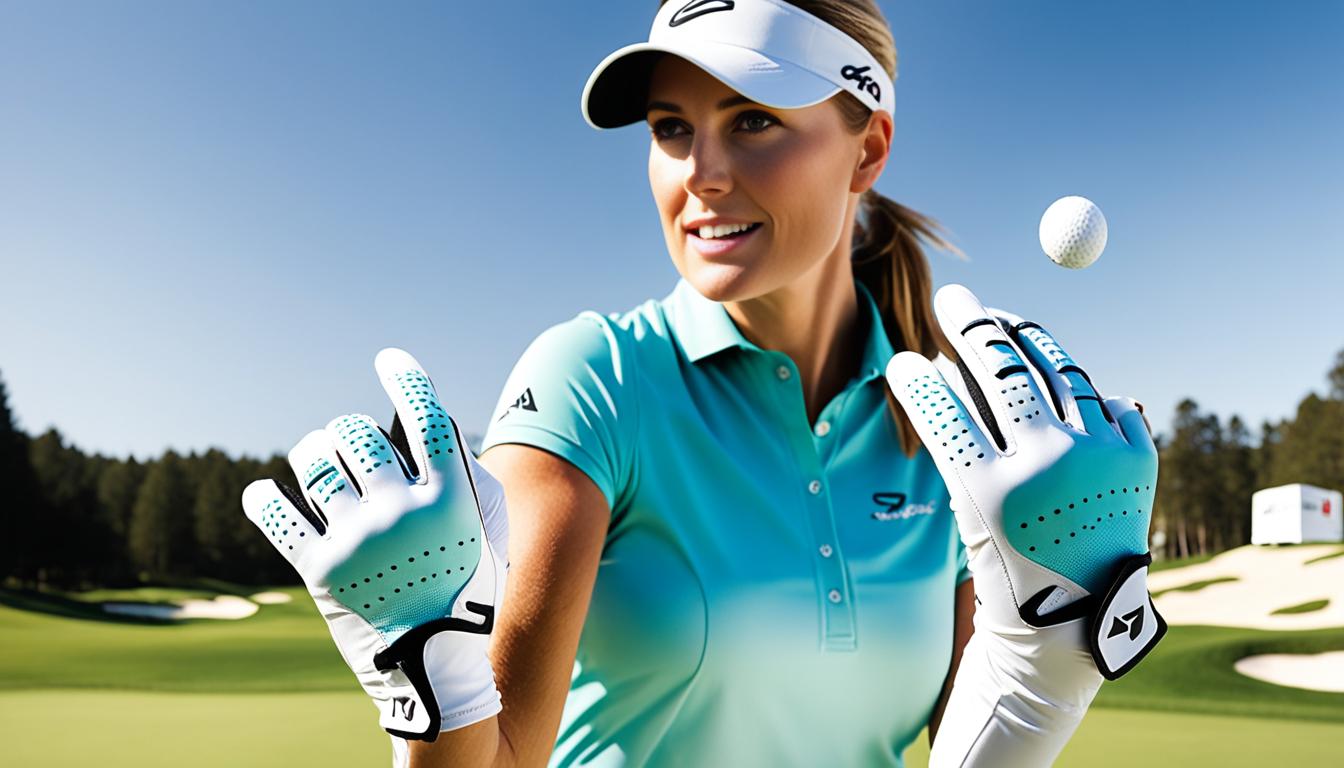Picture yourself on a sunny morning, standing on the lush green fairway, ready to take on the challenge of the course. As you grip the club and prepare for that crucial swing, you feel a surge of excitement and determination. You’ve put in hours of practice, honing your skills and perfecting your technique. But there’s one crucial element that can make or break your game – your golf glove.
Yes, that humble piece of equipment can have a profound impact on your performance on the course. Just like the right pair of shoes or a well-fitted suit, a golf glove that fits perfectly can elevate your game to new heights. It can provide that tailored performance solution you’ve been searching for, optimizing your grip, control, and accuracy.
But what exactly does an optimal fit mean? And how can you achieve it to maximize your performance outcomes? In this article, we’ll dive deeper into the world of golf glove fitting and uncover the secrets to unlocking your peak performance on the green. Get ready to discover performance enhancement techniques that will transform the way you play the game you love.
Key Takeaways:
- A properly fit golf glove is essential for optimal performance on the green.
- A glove that fits properly ensures a secure grip and minimizes hand movement, allowing for better control and accuracy.
- There are key factors to consider in achieving an optimal fit.
- The right glove can make a significant difference in your game.
- Stay tuned to uncover the secrets to unlocking peak performance with the perfect fit.
The Importance of a Properly Fitting Golf Glove
A properly fitting golf glove is crucial for a golfer’s performance on the course. The glove serves as the closest point of contact between the golfer and the club, and any movement within the glove can affect the swing.
A glove that fits like a second skin, snugly across the palm and fingers without any loose material, provides the optimal grip and control. It ensures that there is no interference or compromise during the swing, allowing the golfer to maximize their performance outcomes.
When the glove fits properly, it becomes an extension of your hand, providing the confidence and stability needed to execute precise shots. With tailored performance solutions like a well-fitted glove, performance optimization is within reach, enabling peak performance on the greens.
The Benefits of a Properly Fitting Golf Glove
- Enhances grip and control: A snugly fitting glove allows for a secure grip on the club, reducing the chances of slipping or losing control during the swing.
- Minimizes hand movement: A glove without any loose material minimizes hand movement inside the glove, promoting stability and consistency in the swing.
- Improves feel and feedback: A properly fitting glove provides better sensory feedback, allowing golfers to have a better feel for the clubhead and shots.
- Prevents blisters and callouses: The glove acts as a protective barrier, reducing the friction between the hand and the club, and minimizing the risk of blisters and callouses.
- Increases confidence: When golfers have confidence in their grip and control, they can approach each shot with confidence, leading to improved performance outcomes.
By prioritizing the optimal fit for performance, golfers can maximize their potential on the course and unlock their peak performance strategies. Investing in a well-fitting golf glove is a simple yet effective way to enhance performance and elevate your game.
How to Determine Your Golf Glove Size

Determining the correct golf glove size is crucial for achieving the optimal fit. To find the perfect glove size, you’ll need two measurements: the length of your middle finger and the circumference of your hand around the first knuckle (excluding the thumb). Follow these step-by-step instructions to determine your golf glove size:
Step 1: Measure the Length of Your Middle Finger
Start by placing the end of a measuring tape at the base of your middle finger, just below the knuckle. Measure the length of your middle finger up to the tip. Take note of the measurement in inches or centimeters, whichever you prefer.
Step 2: Measure the Circumference of Your Hand
Wrap the measuring tape around your hand, just below the first knuckle of your fingers. Make sure to exclude your thumb from the measurement. Keep the tape snug but not too tight. Record the circumference measurement in inches or centimeters.
Step 3: Find Your Glove Size
Using your measurements, refer to a golf glove sizing chart to determine your glove size. Match your finger length and hand circumference measurements to the corresponding glove size.
Here are some additional tips to ensure the optimal fit:
- Start by trying the smaller size if you’re between two sizes. A snug fit is preferred, as the glove will stretch slightly over time.
- If you find that you have extra material in the fingers after selecting the correct size, consider trying a cadet sizing option. Cadet gloves are designed for golfers with wider palms and shorter fingers.
- Check your glove size at the start of every golf season. Hand sizes can change, and it’s important to ensure a proper fit for optimal performance.
By determining and selecting the right golf glove size, you’ll be on your way to achieving the optimal fit for performance enhancement on the course.
What Golf Glove Wear Can Tell You About Your Game

Examining the wear on your golf glove can offer valuable insights into your game and potentially help improve your performance on the course. By assessing the areas of wear, such as the palm, heel, and thumb, you can gain valuable information about your grip, swing technique, and club positioning.
Identifying any excessive wear in specific areas can indicate potential issues that may be affecting your performance. For example, if you notice excessive wear on the palm of your glove, it could mean that you are gripping the club too tightly, resulting in restricted wrist movement and a less fluid swing.
On the other hand, wear on the heel of your glove might suggest that your grip is too loose, leading to inconsistency and loss of control during your swing. Additionally, wear on the thumb area can indicate improper hand positioning, affecting the clubface’s alignment at impact.
To optimize your performance and minimize wear on your gloves, it’s crucial to address these areas of wear by making necessary adjustments. Here are a few tips to consider:
- Review your grip: Ensure that your grip is neither too tight nor too loose. Experiment with adjustments to find the optimal grip pressure for your swing.
- Work on your swing technique: Seek advice from a golf pro or engage in proper training to improve your swing mechanics and technique.
- Focus on hand position: Pay attention to your hand placement and ensure a consistent and correct position throughout your swing.
- Rotate between multiple gloves: By alternating between multiple gloves, you allow them to dry out between rounds, extending their lifespan.
By addressing these areas of wear and implementing necessary changes to your grip, swing, and hand position, you can optimize your performance and achieve peak performance outcomes on the golf course. Keep in mind that maintaining proper glove fit and regularly monitoring wear patterns is an essential part of your performance enhancement techniques.
Tips for Identifying Common Wear Patterns:
Here are a few common wear patterns and what they can indicate:
| Wear Pattern | Indication |
|---|---|
| Excessive wear on the palm | Tight grip or restricted wrist movement |
| Wear on the heel | Loose grip or loss of control during the swing |
| Wear on the thumb area | Improper hand positioning or alignment |
Regular vs. Cadet Sizing for Golf Gloves
When it comes to finding the perfect fit for your golf glove, one size does not fit all. Golf gloves are available in two different cuts: regular and cadet sizing. Each caters to different hand shapes, ensuring an optimal fit for golfers seeking performance enhancement techniques and tailored performance solutions.
Regular sizing is designed to fit the standard proportions of the palm and fingers. It provides a comfortable and secure fit for most golfers, allowing them to maintain a strong grip on the club throughout their swing. Regular sizing is ideal for individuals with proportional hand sizes who value a glove that fits like a second skin, optimizing their performance outcomes.
Cadet sizing, on the other hand, is specifically tailored to accommodate wider palms and shorter fingers. Golfers who have extra material at the tops of their fingers or experience finger swelling during a round may find that cadet sizing offers a better fit. By choosing a cadet glove, individuals can avoid having loose material interfere with their grip and maximize their performance on the course.
| Glove Sizing | Hand Shape | Fit |
|---|---|---|
| Regular | Standard proportions of palm and fingers | Fits like a second skin for optimal grip |
| Cadet | Wider palms and shorter fingers | Accommodates hand shape and reduces extra material |
Choosing the right size and cut is essential for achieving the optimal fit and maximizing performance outcomes on the golf course. Whether you opt for regular or cadet sizing, finding a glove that suits your hand shape will ensure comfort, control, and confidence in your swing.
Benefits of Wearing a Golf Glove
When it comes to optimizing your performance on the golf course, wearing a well-fitted golf glove can make all the difference. Not only does it provide an optimal fit for performance, but it also offers a range of benefits that can enhance your overall game.
A consistent grip is essential for executing precise shots, and a golf glove ensures just that. By providing a secure grip, it reduces the likelihood of slipping hands or rotating club faces, allowing you to maintain control throughout your swing. This translates to more accurate shots and better performance outcomes.
Another advantage of wearing a golf glove is the protection it offers your hands. By creating a barrier between your skin and the club, it helps prevent potential blisters and callouses. This not only enhances comfort during gameplay but also minimizes wear and tear on your hands, ensuring you can play at your best for longer.
Furthermore, golf gloves can provide additional benefits in adverse weather conditions. They help keep your hands dry and warm, even in inclement weather, contributing to improved performance and overall comfort. With tailored performance solutions like these, you’ll have the confidence to focus on your game instead of worrying about the elements.

